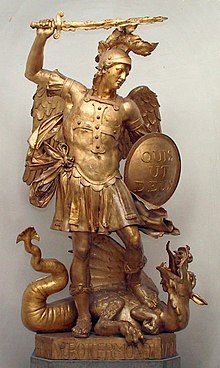
Precious metals are rare, naturally occurring metallic chemical elements of high economic value. Precious metals, particularly the noble metals, are more corrosion resistant and less chemically reactive than most elements. They are usually ductile and have a high lustre. Historically, precious metals were important as currency but are now regarded mainly as investment and industrial raw materials. Gold, silver, platinum, and palladium each have an ISO 4217 currency code.

The Royal Canadian Mint is the mint of Canada and a Crown corporation, operating under the Royal Canadian Mint Act. The shares of the Mint are held in trust for the Crown in right of Canada.
The fineness of a precious metal object represents the weight of fine metal therein, in proportion to the total weight which includes alloying base metals and any impurities. Alloy metals are added to increase hardness and durability of coins and jewelry, alter colors, decrease the cost per weight, or avoid the cost of high-purity refinement. For example, copper is added to the precious metal silver to make a more durable alloy for use in coins, housewares and jewelry. Coin silver, which was used for making silver coins in the past, contains 90% silver and 10% copper, by mass. Sterling silver contains 92.5% silver and 7.5% of other metals, usually copper, by mass.

The American Gold Eagle is an official gold bullion coin of the United States. Authorized under the Gold Bullion Coin Act of 1985, it was first released by the United States Mint in 1986. Because the term "eagle" also is the official United States designation for the pre-1933 ten dollar gold coin, the weight of the bullion coin is typically used when describing American Gold Eagles to avoid confusion with the pre-1933 coins. This is particularly true with the 1/4-oz American Gold Eagle, which has a marked face value of ten dollars, the same as that of its predecessor.

Britannia coins are British bullion coins issued by the Royal Mint in gold since 1987, in silver since 1997, and in platinum since 2018. The reverse of the coin patterns feature various depictions of Britannia, a feminine personification of the United Kingdom while the obverse features a monarch effigy with the legend around it.
The Canadian Gold Maple Leaf (GML) is a gold bullion coin that is issued annually by the Government of Canada. It is produced by the Royal Canadian Mint.

The Manx Noble are platinum, gold or silver bullion coins distributed by the Isle of Man and minted by private companies. While platinum coins have been minted since the early 1800s, the Noble is the first platinum coin created for investors. The coins are not minted every year, but have an erratic schedule. Nobles are legal tender but they do not have a fixed face value; instead, like the Krugerrand or Mexico's Libertad, they are legal tender to the value of their precious metal content.

The Chinese Silver Panda is a series of silver bullion coins issued by the People's Republic of China. The design of the panda is changed every year and minted in different sizes and denominations, ranging from 0.5 troy oz. to 1 kilogram. Starting in 2016, Pandas switched to metric sizes. The 1 troy ounce coin was reduced to 30 grams, while the 5 troy ounce coin was reduced to 150 grams. There is also a Gold Panda series issued featuring the same designs as the Silver Panda coins.
The Canadian Silver Maple Leaf is a silver bullion coin that is issued annually by the Government of Canada since 1988. It is produced by the Royal Canadian Mint.

The American Buffalo, also known as a gold buffalo, is a 24-karat bullion coin first offered for sale by the United States Mint in 2006. The coin follows the design of the Indian Head nickel and has gained its nickname from the American Bison on the reverse side of the design. This was the first time the United States government minted pure (.9999) 24-karat gold coins for the public. The coin contains one-troy ounce (31.1g) of pure gold and has a legal tender (face) value of US$50. Due to a combination of the coin's popularity and the increase in the price of gold, the coin's value has increased considerably. The initial 2006 U.S. Mint price of the proof coin was $800. In 2007 the price was $899.95, $1,410 in 2009, and $2,010 in 2011.
The Canadian Platinum Maple Leaf is the official bullion platinum coin of Canada. First issued by the Royal Canadian Mint in 1988, it was available until 2002 in five different denominations, all of which are marked as containing .9995 pure platinum. The bullion coin was partly reintroduced in 2009 in the form of the 1 troy ounce denomination in .9999 purity, featuring a new portrait of Queen Elizabeth II on the obverse. The coins have legal tender status in Canada, but as is often the case with bullion coins, the face values of these coins is lower than the market price of the material they are made from.

The Silver Kookaburra is a silver bullion coin originating from Australia, and produced at the Perth Mint starting in 1990. The coins were .999 fine silver until the 2018 edition, which increased in purity to .9999 silver. While the obverse of the coin always depicts the reigning monarch--Queen Elizabeth II during her reign and now features King Charles III, the reverse side changes every year, always featuring a kookaburra, a bird native to Australia. Due to the yearly design change and limited production of the one-ounce coins, they have higher collectible value than some other bullion coins. The Perth Mint generally ships the coins in individual plastic capsules. One-ounce coins ship in shrink wrap rolls of 20, with 5 rolls in each box of 100. They are minted in four sizes; 1000g, 10, 2 and 1 troy ounces.
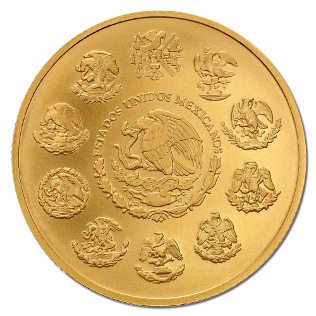
The Libertad coins are silver and gold bullion coins originating from Mexico and minted by the La Casa de Moneda de México. The Mexican Mint was established in 1535 and is the oldest mint in the Americas. The modern coins contain 99.9% silver or gold and are available in various sizes. Both metal coins have undergone a design change. In 1989, 3,500 1⁄4 ounce Libertad platinum coins were produced. Libertads are devoid of face value, yet are legal tender, still accepted as currency and guaranteed by Banco de México based on the market value of its gold or silver content.
The Singapore Mint is a Singaporean mint manufacturer. The Singapore Mint is a fully owned subsidiary of Sembcorp Industries.
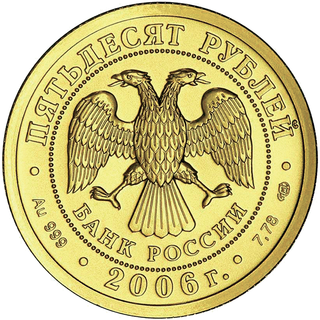
The Russian George the Victorious is a bullion coin issued in gold and silver by the Central Bank of Russia. Mintage began in 2006 with quarter-troy ounce (7.78g) gold coins with a face value of 50 rubles and later in 2009 a one-troy ounce silver coin was introduced with a face value of 3 rubles. Since then, tenth, half, and one-troy ounce gold coins have been minted.
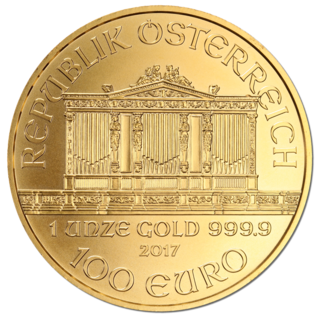
The Vienna Philharmonic, often shortened to Philharmonic, is a bullion coin of gold, silver, or platinum produced by the Austrian Mint. The coin is named for the Vienna Philharmonic orchestra, which inspired the design of both sides. It was introduced in 1989 as a one-troy ounce (ozt), gold coin with a face value of 2,000 Austrian schillings. It is one of the world's best selling bullion coins. In 2002, with the adoption of the euro currency, the nominal value of the one-ounce coin was changed to 100 euros. In 2008, the Mint introduced a one-ounce silver version of the coin with a nominal value of 1.50 euros. The silver coin is also one of the top selling bullion coins, ranked third in 2013. In 2016, the mint introduced a one ounce platinum coin with a face value of 100 euros.

TheQueen's Beasts coins are British coins issued by the Royal Mint in platinum, gold, and silver since 2016. Each of the 10 beast coins in the series features a stylized version of one of the heraldic Queen's Beasts statues present at the coronation of Queen Elizabeth II representing her royal line of ancestry. The silver coin is notable as the first two-ounce United Kingdom silver bullion coin. Engraver Jody Clark designed the entire series. In December 2016, a full line of proof-quality coins was announced. In 2017, the mint began producing a platinum version of the coin. In April 2021, the Royal Mint issued an eleventh "Completer Coin" that featured all 10 of the Queen's Beasts, taking the series to 11 coins in total. The April 2021 release included a "one of a kind" gold coin weighing 10 kg and a denominated value of £10,000. Based upon the UK spot price at the time of release, the 10 kg gold coin had an intrinsic scrap value of approximately £411,000. It was widely reported that the 10 kg gold coin was the heaviest gold coin the Royal Mint had ever produced and that it had taken 400 hours to produce, four days to polish and has been described as a "Masterwork". The Royal Mint announced that Completer Coin completes the Queen's Beasts commemorative collection.
The Dragon Rectangular Coin is a bullion coin produced by the Perth Mint since 2018. Resembling a cross between conventional gold and silver coins and gold and silver bars, the silver coin has a face value of one Australian dollar, while the gold version has a face value of one hundred Australian dollars. Unlike other bullion coins, which are .999 fine silver, both versions are 0.9999 fine, and weigh exactly one troy ounce. A maximum of 250,000 Uncirculated silver coins, and 3,888 Proof maximum mintage are produced each year.
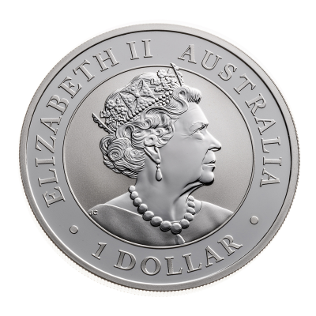
The Silver Koala Bear is a silver coin originating from Australia and produced at the Perth Mint. While the obverse of the coin always depicts Queen Elizabeth II of Australia, the reverse side changes every year, always featuring a koala, a marsupial native to Australia.

The Archangel Michael are silver and gold bullion coins originating from Ukraine and minted by the National Bank of Ukraine.




